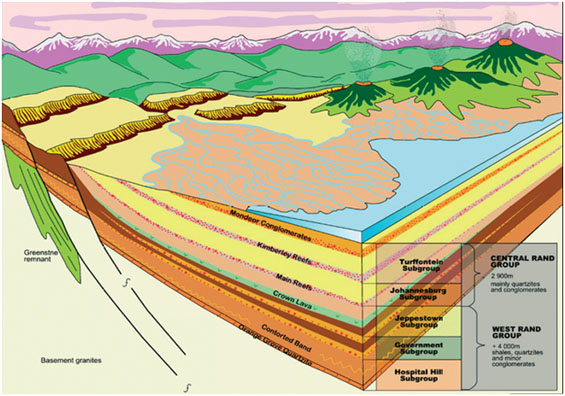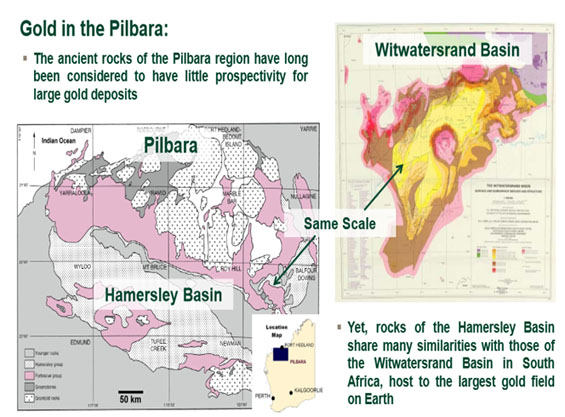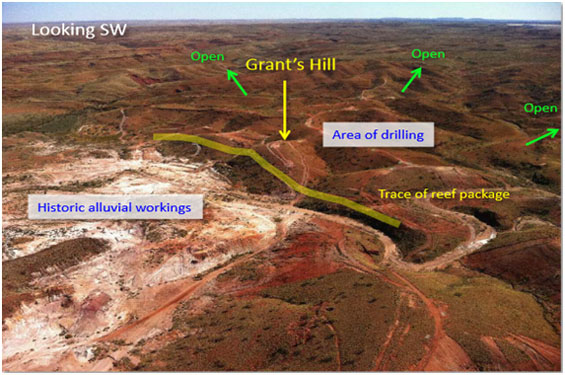
Jay Taylor understands why investors in gold and gold equities are consumed with caution. But the publisher and editor of J. Taylor’s Gold, Energy & Tech Stocks and host of the radio show “Turning Hard Times into Good Times” urges them not to lose sight of the big picture. The big, bull-market picture. Gold juniors with cash and good projects are trading at tiny fractions of their worth. But not for long. In this interview with The Gold Report, Taylor argues that we are on the cusp of a bull market for the ages and suggests eight junior candidates for mind-blowing multiples.
As he followed the demolition of the U.S. gold standard and the rapid rise in the national debt, Taylor’s interest in U.S. monetary and fiscal policy grew, particularly as it related to gold. He began publishing North American Gold Mining Stocks in 1981. In 1997, he decided to pursue his avocation as a new full-time career — including publication of his weekly newsletter.
Interview by Kevin Michael Grace of The Gold Report
The Gold Report: Janet Yellen’s about-face on quantitative easing (QE) makes two panicked pullbacks so far by the Federal Reserve from the end of QE. Is it fair to say we now have QE forever?
Jay Taylor: I don’t know about forever because nothing lasts forever. Your premise is largely correct, however, because the discontinuation of quantitative easing would be so painful it’s a pretty good assumption that it will continue for a long time to come.
It will probably end only when the system breaks down, which is inevitable because it is becoming increasingly insolvent.
TGR: We’ve been hearing for three years about the end of QE and the zero interest-rate policy (ZIRP). It has been argued that this is unlikely for several reasons. QE is the only thing responsible for whatever recovery we’ve had since 2008, and if ZIRP ended, the U.S. government couldn’t pay the interest on its debt, and trillions of dollars in derivatives would go south.
JT: That’s exactly right. Not to mention that the private sector too is dependent on the narcotic of easy money. As I say, QE and ZIRP won’t end until the system breaks down and forces the creation of a different monetary regime.
What we call “the economy” is really more of a casino. The money that is created isn’t getting into the real economy. The Wall Street guys with the Ph.Ds in mathematics have built pick-pocketing machines that misallocate capital into their wallets, into endlessly bigger government and further military action on the part of the United States. It’s going to end very badly. All we can do is try to prepare as best we can to protect ourselves and our families.
TGR: How does the system break down?
JT: We saw the first hint of that with the Lehman Brothers bankruptcy in 2008. Generally, the banking system goes first. They can pretend that they’ve fixed it, but I see that Citicorp just failed its stress test. After the banking system fails, the commercial system fails because you can’t stock the shelves in stores. Then you can’t pay the fire and police departments. Then you have chaos.
TGR: You’ve agreed with Jim Rickards that attempts by the U.S. to “get tough” with Russia will fail. Can you explain why?
JT: Russia has its own interests to protect, but so does Europe. I’m not so sure that the Europeans will necessarily side with the United States. There could be a real crack in the NATO alliance. The Germans need natural gas, and the Russians have it. I see that the French energy company Total S.A. (TOT:NYSE) is helping Russia increase its gas and oil production through fracking. Many German companies are very much involved in Russia, as well.
TGR: You’ve talked about the petrodollar being replaced by “petrogold.”
JT: An enormous amount of gold is flowing into China. And China has established a second gold exchange that will allow non-Chinese to buy and sell it. Not paper gold, which is fantasy gold, but real, physical gold. The gold price is being manipulated by the futures markets, by the very people we were just talking about, the bankers, the bullion guys, the people that really can’t afford to lose the dollar confidence game.
The Chinese want no part of this. They have enough dollars and don’t want more. Moreover, they don’t want to finance America’s military-industrial offensive, which is paid for by dollar manipulation.
TGR: How would petrogold work in practice?
JT: Russia would provide China with much of its energy needs and would be paid in renminbi. The Russians would then take their renminbi to the Chinese exchange and get gold for it, if they so desire. I think the infrastructure is being set up, both with petroleum exchanges and gold exchanges, in Russia and China and other countries in Asia.
We would have a much more balanced world right now if Nixon hadn’t taken us off the gold standard. That allowed the elite and the military-industrial complex to pull the whole of the world into the American orbit and saddle them with American debt and American power.
Now there’s blowback against American power, the currency wars and the U.S. dollar as reserve currency. Russia and China and other countries are saying, “enough already.”
TGR: Gold and gold equities had an excellent winter, but spring has not at all been kind to them. Why?
JT: I think what we’ve seen recently is just part of the natural ebb and flow. This is probably the last good buying opportunity for many junior mining stocks. I am more excited now than I have been at any time since 1981 when I first started writing my newsletter. I think we’re going to see a bull market that’s going to shock even the most ardent goldbugs.
TGR: Which gold junior most excites you?
JT: Novo Resources Corp. (NVO:CNSX; NSRPF:OTCQX) and its Pilbara project in northern Western Australia. It is listed on the CNSX, a secondary exchange that is not very well established.
TGR: Quinton Hennigh is Novo’s CEO. What does that mean to you?
JT: His involvement gives me great confidence, as does the fact that Newmont Mining Corp. (NMC:TSX; NEM:NYSE) owns 32% of the stock, with 18% owned by management. There are only about 55 million (55M) shares outstanding, although there will be another 23.6M issued in exchange for the acquisition of an additional 70% or 18,000 kilometers of prospective land in the area. Those additional shares will be issued to Mark Gareth Creasy, a major mine prospector in Australia.
TGR: The term “world-class” has become a cliché in our industry. Could Pilbara be the real thing?
JT: The Witwatersrand deposit in South Africa has produced 1.6 billion ounces of gold since the late 1800s, more than any other district in the world. Quinton Hennigh wondered if there could be another such district elsewhere. When he was a Ph.D. student at the Colorado School of Mines he began to doubt the prevailing geological theory of how the Witwatersrand was formed.
TGR: What did he eventually conclude?
JT: He hypothesized that Witwatersrand was a precipitation event. There was virtually no oxygen on earth 2.7 to 3 billion years ago when simple plant life and photosynthesis began to appear on earth. With photosynthesis came the production of oxygen, which is required for the precipitation of gold and other minerals out of the sea water. As oxygen appeared, very large amounts of gold present at that time in the oceans was attracted to carbon layers on the sea floor that also became more abundant with a growing abundance of plant life. Thus, Quinton believes the abundance of gold at Witwatersrand is explained by the large amount of gold at that time being precipitated out of sea water on to the shallow seabed.


Note: The thin layers or reefs of conglomerate rock in the illustration above left are where the extremely high-grade gold is contained. Mining is now taking place at very deep levels in the Witwatersrand in South Africa but in the late 1800s it was initially at or near surface. Above top, the prospective ground picked up by Novo is illustrated by the pink areas, which represent Archean Fortescue formation rocks. It is interesting to note that this target is massively larger than the gigantic Witwatersrand (as you can see from the lower illustration).
Hennigh then searched for basins old enough and in the right kind of geological environment to host another Witwatersrand. And he thinks he found one in northern Western Australia in the Pilbara Region.
TGR: What has Novo done to prove Hennigh’s hypothesis?
JT: Like most companies, Novo preserved its cash in 2012. But the company did some auger drilling and came up with an NI 43-101 resource on a very small portion of the project: 421,000 ounces (421 Koz) at or near surface with 1.47 grams per ton (1.47 g/t).
It’s my understanding the Newmont has sent up to a dozen geologists to Pilbara to map the outcrops. This will in effect outline the shorelines of this ancient seabed. Quinton told me that Newmont will be sharing this information with Novo and I expect Novo will put that out into the public domain very soon. I believe this process will be helpful in setting up drill targets, all of which will be shallow, near surface. I expect there will be very extensive drilling and that we should receive a significant number of drill results over the next number of months this year.
TGR: How close is Hennigh to success?
JT: I think he may be very close based on my discussion with Quinton at the Prospectors and Developers Association of Canada (PDAC) conference in Toronto in March. He is obviously thrilled at having found gold hosted in carbon chunks in the drilling that has been carried out so far. He says that Novo has not yet found what are known as the “carbon leaders” or “reefs” that are typical at Witwatersrand and which measure not in ounces per ton but in percentages. He believes a carbon leader has not yet been found because the exploration is still up higher in the system, near the shoreline.
TGR: How speculative is Novo as an investment?
JT: It is very speculative and it will remain so until the market understands whether or not Hennigh is right about his theory and whether or not the deposit is economically viable. The stock is thinly traded and is held by Newmont (32%) and management (18%), and Creasy will soon own 17%. The technically oriented people who are on to this story are not willing to sell, so a small amount of demand has driven the stock dramatically higher since I talked about it at the PDAC. If the market starts to get the sense that Henning has discovered another Witwatersrand, the sky is the limit for this stock. Of course that is a big “if,” so if the market is disappointed for one reason or another, these shares could fall dramatically. It’s selling now at about $1.80/share but it was as low as $0.80 in January.

As to the probability of success, all I can say is that Quinton Hennigh’s hypothesis looks pretty good so far. With just a small portion of this shallow target drilled last year (see illustration above) the company has an NI 43-101 Resource of 421 Koz gold with an average grade of 1.47 g/t. But equally important, I think, is the presence of gold-hosted carbon.
TGR: Closer to home, you’ve written extensively about gold juniors in Québec. What are your favorites there?
JT: I’ve just written about a new one, Alexandria Minerals Corp. (AZX:TSX.V). The company has the Cadillac Break properties in the Abitibi Greenstone Belt: 1.4 million ounces (1.4 Moz) gold Measured, Indicated and Inferred. The company just sold 14 claims to Agnico-Eagle Mines Ltd. (AEM:TSX; AEM:NYSE) for $5M, with Alexandria keeping a 2% net smelter royalty. Agnico owns 9% of the company; Teck Resources Ltd. (TCK:TSX; TCK:NYSE) owns 3.5%; and IAMGOLD Corp. (IMG:TSX; IAG:NYSE) owns 3.5%.
Alexandria’s exploration potential looks absolutely phenomenal. The company has good management and $5M in cash. At $0.05/share, this stock makes a lot of sense. I see the stock has picked up a lot of volume over the past couple of days, so it seems someone is waking up to the story.
TGR: What’s your second Quebec favorite?
JT: Metanor Resources Inc. (MTO:TSX.V) is finally coming into its own. Its Bachelor Lake mine has begun commercial production at 4.5 Koz per month. In addition, Metanor has the Barry project, which gives it real blue-sky upside. That’s an open-pit, very large, low-grade, bulk-tonnage target in which Metanor has already established a fairly decent resource.
Unfortunately, Metanor has seen an awful lot of dilution: 267M shares at $0.18.
TGR: How many ounces could we see at Bachelor Lake?
JT: It’s underground, so those ounces are harder to prove up, but their exploration has been quite promising. These systems run very deep. I think we could be looking at something in the order 1.5 Moz ultimately.
TGR: Is there anything else you like in Quebec?
JT: I’ve recommended Eastmain Resources Inc. (ER:TSX) and Globex Mining Enterprises Inc. (GMX:TSX; GLBXF:OTCPK). I think they both have great prospects. Globex is a project generator. It is prudently managed and does what project generators are supposed to do — use other people’s money.
TGR: Which juniors are your favorites in Nevada?
JT: I like two. The first is Canamex Resources Corp. (CSQ:TSX.V; CX6:FSE). I like its ownership structure. Gold Resources Corp. (GORO:NYSE.MKT; GORO:OTCBB; GIH:FSE) owns 18%, Hecla Mining Co. (HL:NYSE) owns 11.7% and management owns 6.2%. Its Nevada Bruner project has a historic non-NI-43-101 resource of 385 Koz. Canamex has had some exciting recent intersections: 4.08 g/t over 110 meters (110m), 3.1 g/t over 91m and 5.23 g/t over 58m.
The company’s target here is a shallow-oxide, heap-leachable deposit, which looks very good for building the ounces that would make this project economic. And Canamex believes it may have found the feeder zones in these high-grade intercepts. It is planning an NI 43-101 resource and a preliminary economic assessment (PEA) by the end of 2014. At $0.105 a share, add a little more excitement in the gold industry, and I can see this doing extremely well this year.
TGR: And what’s the second?
JT: Paramount Gold and Silver Corp. (PZG:NYSE.MKT; PZG:TSX). This is really well funded with a major Toronto financier standing behind it. The company has the Sleeper project in Nevada and San Miguel in Mexico. Between them, that’s around 6.9 Moz gold and 160 Moz silver.
The company did a PEA on San Miguel: $707M net present value based on $1,500/ounce ($1,500/oz) gold. More recently, Paramount did a PEA on Sleeper: $695M based on $1,300/oz gold. There’s a lot of exploration potential at both. At last look, shares were $1.26. When gold moves higher, Paramount could be a takeover target because it has the ounces to attract a major mining company.
TGR: Let’s talk about companies you like in Central America.
JT: Cayden Resources Inc. (CYD:TSX.V; CDKNF:OTCQX) in Mexico.
TGR: Another takeover target?
JT: I think so. There are only 41.8M shares outstanding and it has very savvy management. CEO Ivan Bebek co-founded Asanko Gold Inc. (AKG:TSX; AKG:NYSE.MKT), and he has brought in strong technical people. Cayden is very well funded. On April 1, it closed a $9M financing at $1.70. The stock is trading at $1.93 now.
The company has two properties. El Barqueño is a shallow target that can be developed fairly quickly. Cayden has something like nine targets there, and on the first target Cayden drilled, the Azteca, it hit commercial-grade gold on 24 of 25 holes.
Cayden’s other property is Morelos Sur. That’s in the Guerrero Belt, which is an up and comer. Cayden thinks this might have greater long-term upside than El Barqueño. Some of its claims there are right smack dab in the middle of Goldcorp Inc.’s (G:TSX; GG:NYSE) Los Filos property, and Goldcorp is going to have to have them. In fact, Goldcorp’s pit runs onto its territory. I think Cayden wants Goldcorp to know that it is not desperate and won’t be forced to take whatever Goldcorp offers it.
TGR: Heading down to South America, what strikes your fancy?
JT: Columbus Gold Corp. (CGT:TSX.V) and its Paul Isnard project in French Guiana.
TGR: This is perhaps the most acclaimed of all junior gold projects, and yet it sits at $0.55 a share with a $71.8M market cap.
JT: This goes back to what we were talking about earlier. Investors haven’t really come out of their shells yet. As you mentioned, we’ve had another dip in the gold price, and people are saying, “Oh no, here we go again.” Well, I don’t think so.
That said, Columbus Gold is a tremendous bargain. Paul Isnard has 5.37 Moz, but the most important part of this story is the outstanding agreement the company made with Nordgold N.V. (NORD:LSE). That’s a Russian company that produced somewhere around 800 Koz last year. Nordgold is very aggressive and growing very rapidly.
According to the agreement, Columbus has a 49.9% interest in Paul Isnard carried to feasibility. Then, if it decides against putting up its 49.9%, it gets a 25% carried interest to production. It cannot be knocked below 25%. French Guiana is probably not the easiest place for English speakers to work, but it’s got French law, so its legal system is reasonably good. And Nordgold has shown it can work anywhere and do well.
Columbus also is a project generator. It has two properties in Arizona and 18 in Nevada. Some are earlier stage, but it has gotten some good drill results in Nevada. I think Columbus is looking to farm some of those out. This is a company that won’t need to spend a lot of cash to stay in the game.
TGR: And your final gold junior pick is?
JT: Brazil Resources Inc. (BRI:TSX.V; BRIZF:OTCQX), I’ve known its founder and chairman, Amir Adnani, for a long time. And, of course, many people know his American energy company, Uranium Energy Corp. (UEC:NYSE.MKT).
Adnani went out and took advantage of the weak gold market to pick up Brazilian gold properties: 2.59 Moz gold in three properties that are relatively close together. Added to the property he had before, that makes something like 3.9 Moz all told. Amir said to me that he hopes we don’t see a resumption in the gold price right away. He’d like to see more weakness so he can get his hands on more low-priced properties. The companies that have the cash and the resources to finance themselves are today in a great position to enrich their shareholders.
This company has a really good ownership structure. Management and insiders own 25%, and 30% is held by institutional investors. This includes a very wealthy Brazilian financier who has the deep pockets. Adnani is a very smart manager. He’s done very well in the past, and I think he’s on to something here. I like this one a lot.
TGR: Final thoughts?
JT: Investors are still shell-shocked. And the mainstream is convinced that gold isn’t going anywhere because they’ve been sold on the idea that the Ph.D. standard is much better than the gold standard. And if you believe that, why would you buy gold stocks? I’d say that 99% of American investors aren’t in the least bit interested. Canadians are a little different because mining is a big Canadian industry.
But I think we’re on the verge of a secular bull market for the ages, something greater than I’ve seen in my lifetime.
TGR: Jay, thank you for your time and your insights.
Related Articles:
- Jay Taylor: Cashing In on Deflationary Forces
- Puerto Rico’s Tax Benefits — More than ‘The Better Florida’
- Ted Dixon: What Gold Stock Insider Trading Tells Us
Read what other experts are saying about:
COMPANIES MENTIONED: ALEXANDRIA MINERALS CORP. : BRAZIL RESOURCES INC. : CANAMEX RESOURCES CORP. :CAYDEN RESOURCES INC. : COLUMBUS GOLD CORP. : EASTMAIN RESOURCES INC. : GLOBEX MINING ENTERPRISES INC. :GOLDCORP INC. : METANOR RESOURCES INC. : NOVO RESOURCES CORP. : PARAMOUNT GOLD AND SILVER CORP.
Want to read more Gold Report interviews like this? Sign up for our free e-newsletter, and you’ll learn when new articles have been published. To see recent interviews with industry analysts and commentators, visit our Streetwise Interviews page.
DISCLOSURE:
1) Kevin Michael Grace conducted this interview for Streetwise Reports LLC, publisher of The Gold Report, The Energy Report, The Life Sciences Report and The Mining Report, and provides services to Streetwise Reports as an independent contractor. He owns, or his family owns, shares of the following companies mentioned in this interview: None.
2) The following companies mentioned in the interview are sponsors of Streetwise Reports: Metanor Resources Inc., Cayden Resources Inc., Columbus Gold Corp. and Brazil Resources Inc. Goldcorp Inc. is not affiliated with Streetwise Reports. Streetwise Reports does not accept stock in exchange for its services.
3) Jay Taylor: I own, or my family owns, shares of the following companies mentioned in this interview: Brazil Resources Inc., Canamex Resources Corp., Cayden Resources Inc., Columbus Gold Corp., Novo Resources Corp. and Paramount Gold and Silver Corp. Research carried out and recommendations made in J Taylor’s Gold, Energy & Tech Stocks are intended solely for the paid subscribers of that newsletter and fees are never paid in exchange for recommendations. However, Taylor Hard Money Advisors, Inc., the publisher of J Taylor’s Gold, Energy & Tech Stocks, has received reprint fees and radio sponsorship fees from all of the family-owned companies except Novo Resources Corp. I was not paid by Streetwise Reports for participating in this interview. Comments and opinions expressed are my own comments and opinions. I had the opportunity to review the interview for accuracy as of the date of the interview and am responsible for the content of the interview.
4) Interviews are edited for clarity. Streetwise Reports does not make editorial comments or change experts’ statements without their consent.
5) The interview does not constitute investment advice. Each reader is encouraged to consult with his or her individual financial professional and any action a reader takes as a result of information presented here is his or her own responsibility. By opening this page, each reader accepts and agrees to Streetwise Reports’ terms of use and full legal disclaimer.
6) From time to time, Streetwise Reports LLC and its directors, officers, employees or members of their families, as well as persons interviewed for articles and interviews on the site, may have a long or short position in securities mentioned. Directors, officers, employees or members of their families are prohibited from making purchases and/or sales of those securities in the open market or otherwise during the up-to-four-week interval from the time of the interview until after it publishes.
